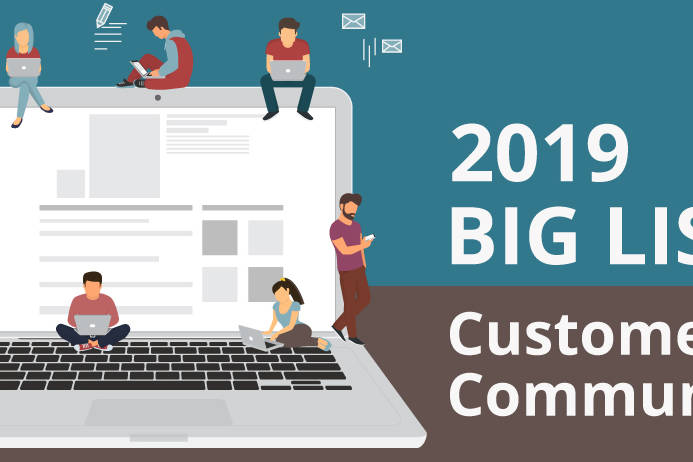It’s common sense — serving your most valuable customers well is basic good business because attracting new customers costs, on average, five to eight times more than retaining old ones. Many executives are familiar with this idea; a survey conducted by Forrester Research in 2009 showed the number of companies focusing on customer retention had nearly doubled from the preceding year.
One approach is to identify the customers that matter most — the customers that generate the most value for the company — and drop those that cost more than they contribute. A business will calculate each customer’s lifetime value (CLV) and customer equity (CE). These values represent the present value of all future profits obtained from a customer over his/her life of a relationship with a firm. From these calculations, companies can make educated decisions about the customers to which they should direct their marketing dollars and those which should be less targeted — not to say ignored.
But in the new social business economy, the best customer retention tactics blend traditional monetization with harder-to-measure customer loyalty and brand or company perception metrics. Social media provide a richer set of information about customers, “watch points” that may not be easily quantified, but should be monitored by companies to get a broad understanding of their customers.
One example is “word of mouth” marketing (WOM), defined by the Word of Mouth Marketing Association (WOMMA), as “giving people a reason to talk about your products and services, and making it easier for that conversation to take place. It is the art and science of building active, mutually-beneficial consumer-to-consumer and consumer-to-marketer communications.” This includes phenomena such as: going viral, product buzz, community building and cause marketing.
As popular social media outlets continue to spread, the scope of this job is broadening. WOM now includes audible conversations, emails, chats, blogs, tweets, SMS messages, podcasts, YouTube videos, mobile services and the list goes on. The sheer volume and variety is nearly overwhelming. Yes, there are tools available such as Techridgy, Tweetbeep and a host of free and for-pay social media monitoring services. None are comprehensive. Simply gathering the information is a formidable task. But it is possible.
The key is understanding the importance of turning the contents of conversations and interactions into measures of brand engagement, customer sentiment and product attitudes. Utilizing WOM means developing systems to use the information strategically within the organization to inform innovation, increase customer satisfaction, identify brand evangelists and manage the sales channel.
For example, Netflix famously discovered that its “worst” customers — those unprofitable subscribers who consumed too many DVDs on the plan — were also the most enthusiastic evangelists for the service. They contributed the majority of the reviews, comments and suggestions about films, from which Netflix built its sophisticated and economically powerful recommendations engine: WOM to CRM to JIT demand management. Instead of dropping these costly customers, Netflix transformed their loyalty and enthusiasm into the foundation for a wildly successful enterprise built on industry-leading customer satisfaction and retention. On the other hand, take Apple’s iPhone 4 gaffe (please!).
Organizations can take a variety of steps to use the information they receive through social media monitoring for the benefit of the bottom line. This entails four basic tasks:
1. Educating consumers about the firm’s products and services
2. Identifying like-minded consumers and providing an accessible medium for them to openly communicate and share information
3. Observing and analyzing how, where, and when information and opinions are being shared
4. Listening to supporters, detractors and neutrals and responding promptly and appropriately to their concerns and contributions
The influence of the social channel is increasing exponentially — ignore it at your peril. Today’s successful enterprises need to carefully monitor their brands in the social sphere. They should track upswings and downturns in customer behavior and explore how consumers perceive their brands both before and after the launch of marketing campaigns. Monitored and managed effectively, what your customers are saying about your firm, your brands and your competitors is a strategic asset. Customer intimacy and social reputation awareness are no longer a nice-to-have in the social business world — it’s the key to keeping your customers and building a better bottom line.
10/10
Warning: Attempt to read property "base" on array in /home3/trusten9/public_html/leadernetworks/wp-content/plugins/wp-user-profile-avatar/shortcodes/wp-user-profile-avatar-shortcodes.php on line 665
Warning: Attempt to read property "base" on array in /home3/trusten9/public_html/leadernetworks/wp-content/plugins/wp-user-profile-avatar/shortcodes/wp-user-profile-avatar-shortcodes.php on line 665
Warning: Attempt to read property "base" on array in /home3/trusten9/public_html/leadernetworks/wp-content/plugins/wp-user-profile-avatar/shortcodes/wp-user-profile-avatar-shortcodes.php on line 665
Warning: Attempt to read property "base" on array in /home3/trusten9/public_html/leadernetworks/wp-content/plugins/wp-user-profile-avatar/shortcodes/wp-user-profile-avatar-shortcodes.php on line 665
Related Posts
1 Comment
Add comment Cancel reply
This site uses Akismet to reduce spam. Learn how your comment data is processed.



It’s true that there is so much that be learned through listening in the social media space. I often tell people that social media is like a giant focus group where people are offering their honest opinions for free. Just by listening to what these people are saying companies can learn what they’re doing right and wrong, what current trends are, where the best places to reach their audience are and so many other things.
I tell people that even if they aren’t ready to start engaging through social media, they should at least be listening to what people are saying if they want to know more about their audience and improve themselves.
Cheers,
Sheldon, community manager for Sysomos (http://sysomos.com)